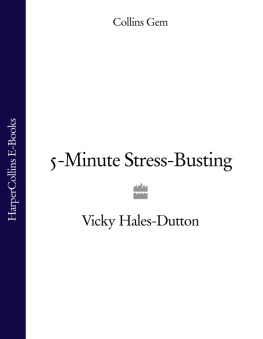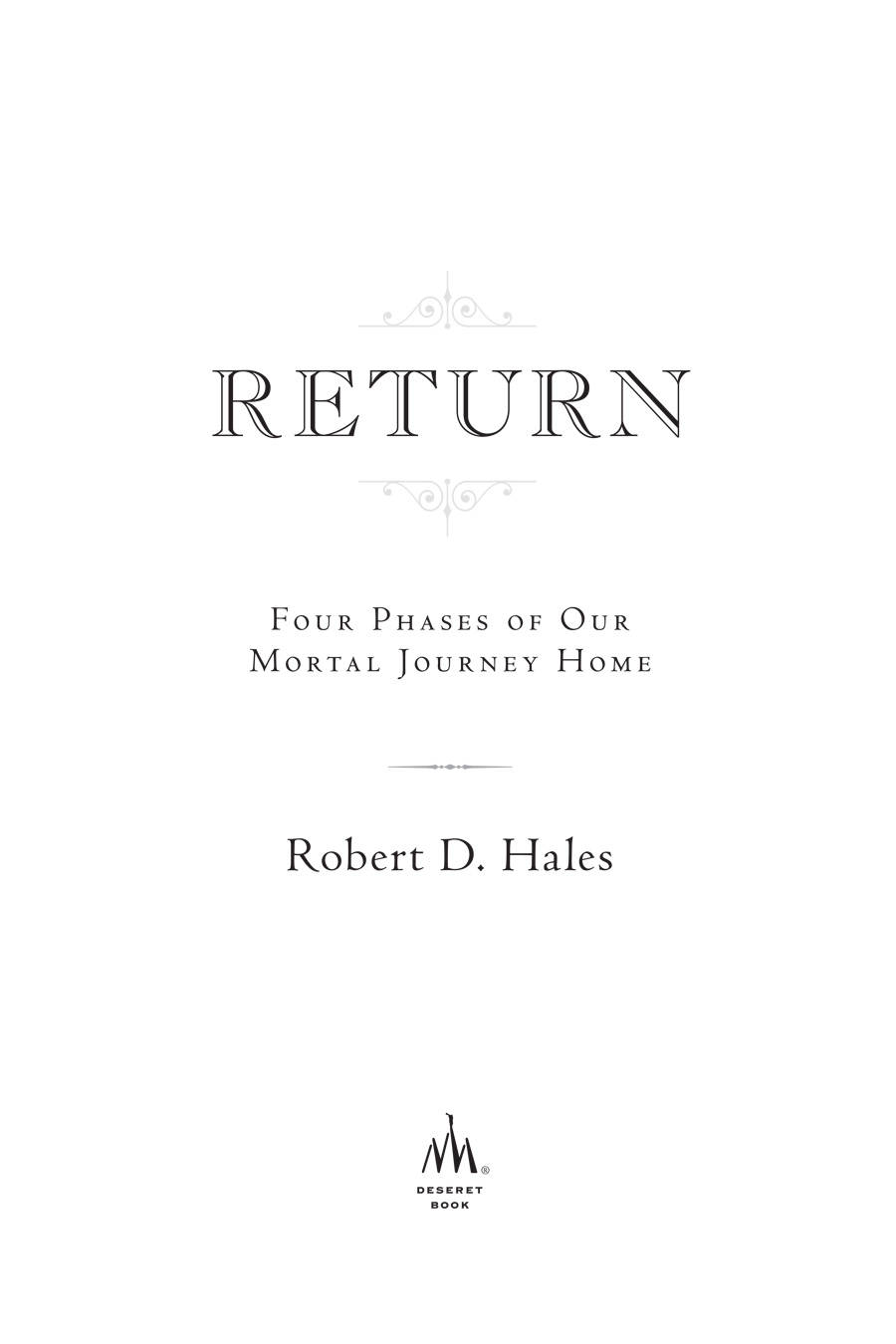2010 Robert D. Hales.
All rights reserved. No part of this book may be reproduced in any form or by any means without permission in writing from the publisher, Deseret Book Company, P.O. Box 30178, Salt Lake City Utah 30178. This work is not an official publication of The Church of Jesus Christ of Latter-day Saints. The views expressed herein are the responsibility of the author and do not necessarily represent the position of the Church or of Deseret Book. Deseret Book is a registered trademark of Deseret Book Company.
Endsheets: The Purpose of Life, by Robert Oliver Skemp. Intellectual Reserve, Inc. Used by permission.
Library of Congress Cataloging-in-Publication Data
Hales, Robert D., 1932
Return : four phases of our mortal journey home / Robert D. Hales.
p. cm.
Includes bibliographical references and index.
ISBN 978-1-57008-769-1 (hardbound : alk. paper)
1. Plan of salvation (Mormon theology) 2. Christian lifeMormon
authors. 3. The Church of Jesus Christ of Latter-day SaintsDoctrines.
4. Mormon ChurchDoctrines. I. Title.
BX8643.S25H35 2010
234dc22 2010011474
Printed in the United States of AmericaPublishers Printing, Salt Lake City, Utah
10 9 8 7 6 5 4 3 2 1
To Mary,
my eternal companion, and our eternal family

Acknowledgments

For behold, this is my work and my gloryto bring to pass the immortality and eternal life of man.
Moses 1:39
I could not have written this book alone. For many years, I had the concept for this book in mind and appreciate the encouragement from friends and associates to complete it.
Mary Berrey has been my faithful secretary, editor, and friend for twenty-six years. She carefully reviewed each word of the manuscript with a cautious eye, questioning every unwarranted use of a superlative or absolute statement. When I had a hard time getting to work on the manuscript, Marys masterful use of reminder notes helped me get back on task.
Rob Eatons input has been invaluable. He is familiar with the talks I have given over the years, and he has helped me organize my thoughts for this book. Perhaps more important, he helped persuade me to include here some stories that I have never shared before to illustrate the doctrines I teach.
I appreciate Jim Bells early assistance as well. Among other things, Jim conducted hours of interviews with me that proved an invaluable resource. His work served as a catalyst that helped me to really begin this project.
I am grateful to Henry J. Eyring, who encouraged me to write this book, and also to David Warner, who provided useful feedback on the manuscript and assisted with the editing.
Cory Maxwell and Sheri Dew of Deseret Book Company have been supportive with me over the years. Few editors and publishers would patiently support an author for more than a decade as they have. I also deeply appreciate their trusting me enough to allow me to take a rather unusual approach in this book.
Many others behind the scenes at Deseret Book have helped in important ways. Suzanne Brady has carefully edited the book and suggested important clarifications. Richard Ericksons creativity and sensitive eye have enhanced its appeal and appearance. It has likewise benefited from Tonya Facemyers attention to detail as she did the typesetting.
I am indebted to more mentors than I can name. The thoughts we write in books are shaped by the experiences of our lives. My life has been richly blessed and my thoughts have been profoundly influenced by my parents, the prophets with whom I have served, my colleagues in the Quorum of the Twelve, and many other leaders and friends I have been blessed to know.
No one has shaped and blessed me more than has my dear wife, Mary. Our marriage has been a true partnership through the years; she is, without doubt, my better half. We were blessed with two fine sons, Stephen and David, and our grandchildren, who have enriched our lives. There is no question in my mind that I would not be the man I am today without Marys loving influence in my life. To the extent that this book is a reflection of any progress I might have made, it is also a reflection of her constant dedication and inspiration that have helped me become a more complete disciple of Christ.
Mary is also the best editor a writer could have. She is always kind, but she never holds back. Both this book and my talks through the years are better because of her wise suggestions.
Finally, I am reluctant to take credit for the ideas developed here. Any ideas that were worthwhile came through the Spirit from a loving Heavenly Father. That is not to suggest that every word of this book is inspired, however. Even though I have labored over it carefully and was helped in its preparation, I alone am responsible for the views it expresses. It is not an official statement of Church doctrine.

Introduction
While serving our mission to England, Sister Hales and I continually thought about how to teach the gospel to our brothers and sisters. Our missionaries and their investigators needed more than informationmore than just terms and concepts. They needed a deep personal understanding of the essential truths of our existence: who we are, where we came from, why we are here, and where we are going. They needed to know that all of us are on our journey home.
In those days we identified five steps to help them, based on the first principles and ordinances of the gospel. These steps we described as a bridge from this world into the kingdom of God: faith in the Lord Jesus Christ, the gate of repentance and baptism, receiving the Holy Ghost and a witness of the Father and the Son, the strait and narrow path of obedience, and the goal, eternal life.
As you can see, the steps across the bridge were simple enough for the missionaries to remember and for their investigators to understand. So simple, in fact, that they could have been Burma-Shave signs to lead them along! In talking about a bridge, we were teaching them: These are the important things that every member of the Church needs to know to return to Heavenly Father with honor. These are the essential truths of the gospel, and this is why they apply to you.
Later, while serving as the Presiding Bishop, I had the opportunity to expound on these steps, using those little advertising signs I remembered from my childhood. I wanted to teach, in a visual way, that progress along the path to exaltation is supported by our progress in becoming self-reliant (see pages 4 and 5).
Why did I use these modest illustrations? Among other things, I wanted to make it clear that the gospel truly is simple. There are just a few key steps we need to take now and throughout our lives in order to have all the blessings Heavenly Father has promised us. I also wanted to reassure my brothers and sisters that living the gospel is a process, like walking down a path. In contemplating my own life, I remember what my father used to say to me: How did Hannibal cross the Alps? One step at a time, and the rest of the army followed. In the same way that we would cross a bridge or follow a path, we live the gospel















